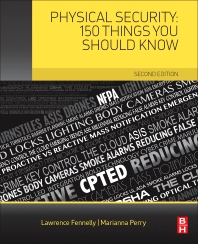Save Lives with Mass Notification Solutions
A diversity of emergency communications and mass notification solutions can add a stronger voice to your business.

Discussing audio communications and notification is another important chance for “dealers and integrators to have a conversation” with their clients, says Richard Conner, director of marketing, Fire-Lite Alarms, Northford, Conn. And another chance to “show the customer the value” of technology, solutions and your abilities and knowledge, adds Loren Schrieber, marketing product manager, Silent Knight, Northford, Conn.
Samuel Shanes, chairman and chief executive officer for Talk-A-Phone, Niles, Ill., agrees. “The key to dealer and integrator success is to know your customers. There are a lot of options and capabilities. Bring everything together to match the way the end user wants to do it.”
The conversation and value center, when viewing evolving life safety devices, systems and integration, have moved from just fire sirens, bells and strobes to emergency communications systems (ECS) and mass notification systems (MNS). The ways to get the word out have become super-sized as fire systems gain an intelligent voice, intercoms get a voice messaging layer, emergency telephones muscle up with integrated features, while connected and stand-alone solutions target a few or thousands of people with emergency text messages, e-mails, desktop displays and social network posts.
And, thanks to NFPA 72 2010 changes, ECS systems can now broadcast less-than-emergency messages.
There also is a growing array of third-party mass notification services, often cloud-based, that, integrated into fire, life safety and security systems or not, send out and audit messages. Adding these services, some of which shun the dealer channel, to a proposal may shine up the apple but not necessarily boost the bottom line.
Getting Lingo Right
Terminology in this sector can vary widely. Some people call it “mass notification” while others call it “emergency communication.” The two can be interchangeable, but somewhat like brandy and cognac. A mass notification system may have emergency communications as part of it, but mass notification is more often comprised of multiple means of getting the word out. The various codes (NFPA 72 2010 and Unified Facilities Criteria or UFC, among them) “indicate mass notification as a subset of ECS,” says Roopa Shortt, audible visible marketing manager, System Sensor, St. Charles, Ill.
Still, the technology and product lines are blurring. Intercoms can do access control and emergency communications.
For example, the Winston-Salem/Forsyth County School Board has added Aiphone, Bellevue, Wash., security intercom systems at all elementary schools. All doors are locked and guests have to be electronically let in by office staff. A camera activates when someone pushes the outside buzzer.
In a mass notification mode, an IP-based intercom platform can provide significant features. For instance, integration with Stentofon, Kansas City, Mo., through standards such as OPC, creates a full security package or supports most public address systems.
Intercoms are, according to Rick Myatt of Jacksonville Sound & Communications, Jacksonville, Fla., common at schools. With their larger speakers, it is fairly easy to add a voice messaging layer.
But when it comes to retrofitting fire systems for emergency communications, Myatt says, “If it was just horns and strobes, you’ll need additional wiring and hardware as well as speaker/sounder adjusting, spacing or adding for intelligibility. It’s a bit of a job to change it out.” He sees opportunities in mass notification systems. A partner of his firm, technology from CareHawk Safety Communications of Kitchener, Ontario, Canada, creates specific tones and voice messages for each emergency situation triggered for broadcast from security sensors, telephone codes, cell phones or a button push.
IT at the Table
In this emerging area of wide area networks carrying emergency messages, Myatt says that “we have gone beyond working with maintenance. Now IT holds the keys to the kingdom.”
The Jacksonville integrator also specifies EST products (from Edwards Fire & Security, Bradenton, Fla.) where appropriate. The EST3X, for instance, has eight channels of integrated digital audio capable of handling mass notification and emergency communications.
While mass notification can be accomplished in many ways, specific instructions for a particular situation are the best method. One example: Mohnton, Pa.-based Gai-Tronics’ campus public address technology includes addressable amplified speakers to limit broadcast impact on surrounding communities and conflicting sound ordinances.
Another mass notification approach: loudspeakers, which can broadcast in a tight pattern or long distances outdoor or in stadiums or other indoor and outdoor facilities. The equipment can range from short throw with wide coverage angles to ultra-narrow, long throw systems.
According to Rod Falconer, director of technical training and education at Community Professional Loudspeakers, Chester, Pa., high intelligibility, versatile performance and weather-resistant construction are among key capabilities.
With all the choices, there are plenty of opportunities to “upsell as well as add features and devices incrementally, from indoors to outdoors or to add signage,” adds Shortt. Such features include colored lenses for strobe devices to provide more specific information about an alert.
So an emergency communications job need not be a one-time sale and installation. “Customize to end user needs but have it able to scale up,” says Conner. “Building and user needs can change.” He also suggests selling the concept of numerous consoles around a facility as well as the ability to activate an emergency message through a landline or cell phone. A person with emergency responsibility may not be near a console during an incident. And, whether an ECS or MNS project, dealers and integrators should also consider clients with smaller facilities, who could see value in the approach.
Consider Personal Notification
See value in taking a holistic approach to mass notification, advises Ted Milburn, vice president of marketing at Long Branch, N.J.-based Cooper Notification. He agrees it is essential for dealers and integrators to educate clients on what is mass notification and how it goes beyond fire alarms inside buildings. “Look at it in three layers – indoor, outdoors and personal notification. Determine your client’s risks and match an MNS to it.”
On the personal notification side, which involved a database of people to be contacted, an integrator may see recurring revenue in the local or remote effort of maintaining or updating the database. Also, when working with a cloud-based mass notification service, you have to make sure the word really gets out. There is the opt-in, opt-out choice when it comes to populating the database. “Opt-in services typically have low participation,” Milburn observes. No matter which way to go, Milburn says, “Use what you have such as the fire system or the paging or intercom system within the building.”
Shanes sees the future in the cloud and in software. For example, his company’s newest mass notification platform is a “software-as-a-service, totally off-site with access through a Web browser. But for facilities that don’t want to depend on the Internet, it can reside in-house.”
When Common Is a Good Thing
It’s called the Common Alerting Protocol or CAP. It is aimed primarily at public safety officials but is also being embraced by some mass notification system providers. It is a digital format for exchanging emergency alerts that allows a consistent alert message to be disseminated simultaneously over many different communications systems. The Federal Emergency Management Agency worked with the Organization for the Advancement of Structured Information Standards to develop a standardized international technical data profile that defines a specific way of using the standard for the purposes of the Integrated Public Alert and Warning System.
Speaking of ECS Power
Backup power is a critical component of any emergency communications system (ECS). All components within an ECS depend on the availability of electricity in order to function fully. During any type of disaster, or even in a temporary power outage, it is essential that communications are not interrupted. This can be accomplished with the installation of an uninterruptible power supply (UPS), which provides protection from all power problems such as surges and spikes, but also provides battery backup power during a power outage.
In many states and localities, emergency communication systems require a 24-hour quiescent load capability, meaning that when the system is not being used, there is at least 24 hours of battery backup capacity should power fail. Other mandated regulations may require a minimum of 15 minutes of full-load alarm capacity from a UPS. These systems also may need to function for long periods of time during an emergency. Actual use time may be 30 to 60 minutes, but typically only a partial load is required when an announcement is being made.
The code requirements should be evaluated by a system designer to determine if a larger capacity or longer battery backup time should be provided or is required by state, local or federal regulations. — Contributed by Bill Allen, director of marketing at Para Systems, Inc. / Minuteman Power Technologies, Carrollton, Texas.
Real-time Locating Plus a Panic Button
Schools in Indiana, California, Idaho, Washington and Virginia use a real-time location system wireless panic button solution to keep students safe and improve school security. An instructor wears an Ekahau RFID safety badge (pictured) and, in the event of a medical, disciplinary or other emergency, pulling down on the badge instantly makes his or her location known. Software also allows officials to send mass notifications to faculty badges, displayed as text messages on the badge’s LED. In addition, the system automatically time-stamps and records all emergency events and resolutions for review by campus and police departments.
Door Lockdown Tied to Notification
Emergency communications and mass notification can be tied to door controls. For example, keypad-less standalone access control can be vandal-proof, wireless and feature high-efficiency circuits for low-power consumption. In one case, Continental Access Control Networx (Napco, Amityville, N.Y.) wireless locks work at a leading private university. The system can lockdown doors at a specific site or across a campus, tripped by a mass notification message.
At Notre Dame High School in Sherman Oaks, Calif., its system now includes the next generation networked wireless models. The system has the ability to lockdown any or all doors from the school server or portable keyfobs.
Looking for a reprint of this article?
From high-res PDFs to custom plaques, order your copy today!








